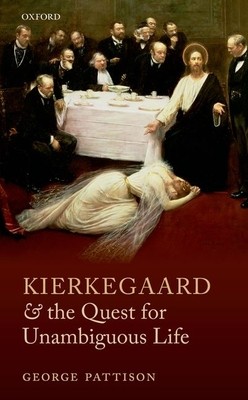
- We will send in 10–14 business days.
- Author: George Pattison
- Publisher: Oxford University Press, USA
- ISBN-10: 0199698678
- ISBN-13: 9780199698677
- Format: 14 x 21.6 x 2.3 cm, kieti viršeliai
- Language: English
- SAVE -10% with code: EXTRA
Reviews
Description
This book looks at Kierkegaard with a fresh perspective shaped by the history of ideas, framed by the terms romanticism and modernism. 'Modernism' here refers to the kind of intellectual and literary modernism associated with Georg Brandes, and such later nineteenth and early twentieth century figures as J. P. Jacobsen, Nietzsche, Dostoevsky, Ibsen (all often associated with Kierkegaard in early secondary literature), and the young Georg Lukacs. This movement, currently attracting increasing scholarly attention, fed into such varied currents of twentieth century thought as Bolshevism (as in Lukacs himself), fascism, and the early existentialism of, e.g., Shestov and the radical culture journal The Brenner (in which Kierkegaard featured regularly, and whose readers included Martin Heidegger). Each of these movements has, arguably, its own 'Romantic' aspect and Kierkegaard thus emerges as a figure who holds together or in whom are reflected both the aspirations and contradictions
of early romanticism and its later nineteenth and twentieth century inheritors.
EXTRA 10 % discount with code: EXTRA
The promotion ends in 22d.05:36:44
The discount code is valid when purchasing from 10 €. Discounts do not stack.
- Author: George Pattison
- Publisher: Oxford University Press, USA
- ISBN-10: 0199698678
- ISBN-13: 9780199698677
- Format: 14 x 21.6 x 2.3 cm, kieti viršeliai
- Language: English English
This book looks at Kierkegaard with a fresh perspective shaped by the history of ideas, framed by the terms romanticism and modernism. 'Modernism' here refers to the kind of intellectual and literary modernism associated with Georg Brandes, and such later nineteenth and early twentieth century figures as J. P. Jacobsen, Nietzsche, Dostoevsky, Ibsen (all often associated with Kierkegaard in early secondary literature), and the young Georg Lukacs. This movement, currently attracting increasing scholarly attention, fed into such varied currents of twentieth century thought as Bolshevism (as in Lukacs himself), fascism, and the early existentialism of, e.g., Shestov and the radical culture journal The Brenner (in which Kierkegaard featured regularly, and whose readers included Martin Heidegger). Each of these movements has, arguably, its own 'Romantic' aspect and Kierkegaard thus emerges as a figure who holds together or in whom are reflected both the aspirations and contradictions
of early romanticism and its later nineteenth and twentieth century inheritors.


Reviews